Vining plants bring a unique charm to any indoor space. Their cascading stems and lush foliage create a natural, living artwork that can transform bare walls, windows, and corners into green masterpieces. But to make these climbers flourish indoors, they need more than just sunlight and water—they need proper training and support.
Learning how to train vining plants to climb indoors allows you to shape your greenery into elegant displays while promoting healthier, fuller growth. In this detailed guide, we’ll explore the best techniques, materials, and care tips for training indoor vines, ensuring they thrive and beautify your home all year round.
Why Train Indoor Vining Plants?
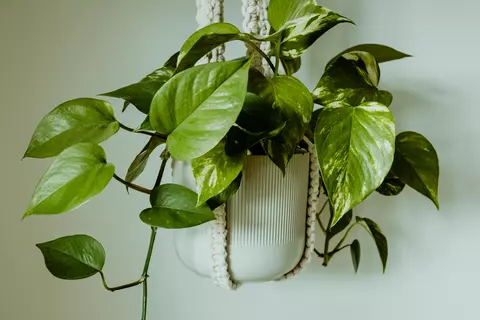
Vining plants naturally grow toward light sources, stretching their stems in search of sunlight. In the wild, they climb trees, walls, or rocks to reach the canopy. Indoors, however, they need your guidance to mimic those conditions.
Training vines to climb provides several benefits:
- Space Optimization: It keeps plants off the floor and furniture, using vertical areas like walls and windows efficiently.
- Healthier Growth: Climbing encourages stronger stems and better air circulation, reducing the risk of mold and pests.
- Aesthetic Appeal: Trailing vines can be shaped into living walls, cascading arches, or intricate patterns.
- Natural Décor: Vining plants soften harsh lines, purify indoor air, and create a tranquil, organic atmosphere.
Best Indoor Vining Plants for Training
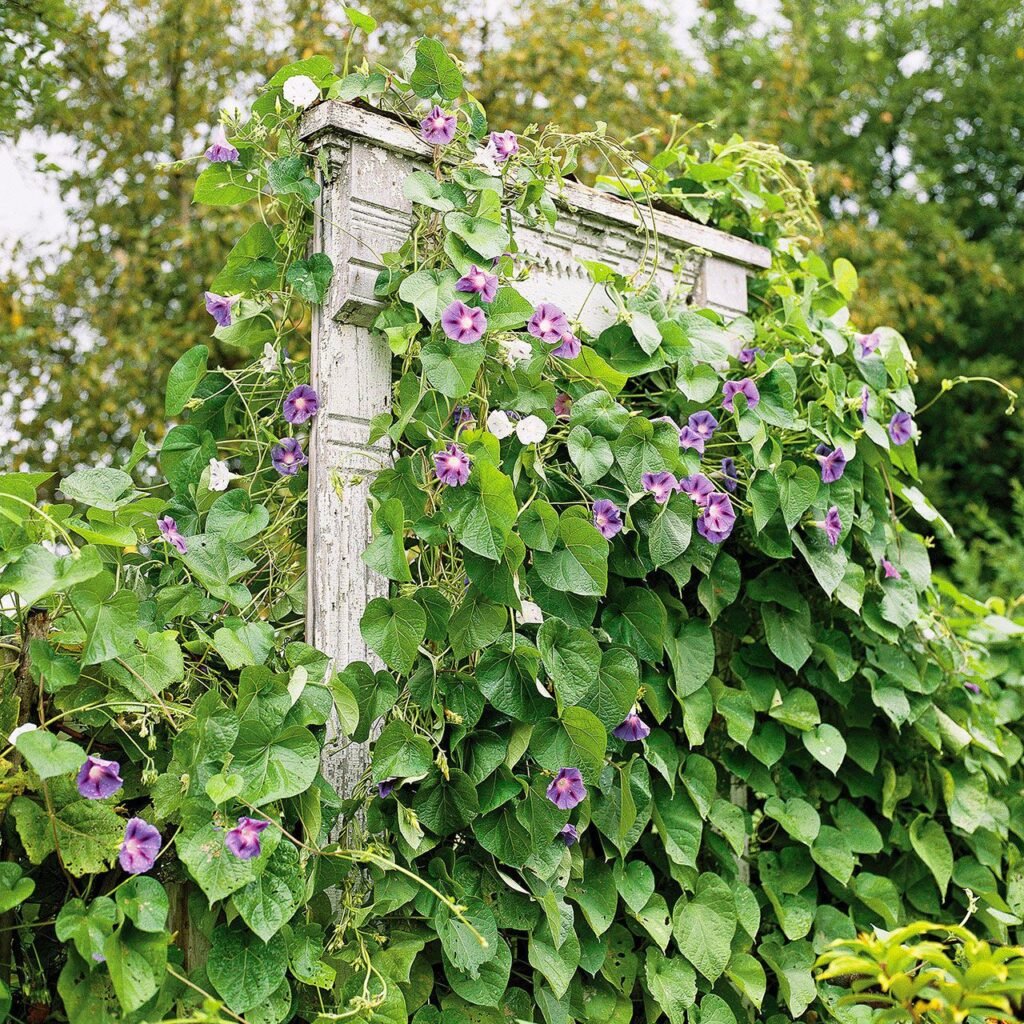
Before learning the techniques, it’s important to choose vines that thrive indoors and respond well to training. Here are some of the most popular options:
1. Pothos (Epipremnum aureum)
- Growth: Fast-growing and easy to shape.
- Training Tip: Ideal for trellises, poles, or wall hooks.
2. Philodendron (Heartleaf or Brasil)
- Growth: Flexible stems that quickly attach to supports.
- Training Tip: Perfect for moss poles or wire frames.
3. English Ivy (Hedera helix)
- Growth: Dense and elegant with small leaves.
- Training Tip: Great for framing windows or creating topiaries.
4. Monstera adansonii (Swiss Cheese Vine)
- Growth: Loves climbing and produces iconic perforated leaves.
- Training Tip: Use a moss pole or jute-covered rod for best results.
5. String of Hearts (Ceropegia woodii)
- Growth: Delicate, heart-shaped leaves on thin vines.
- Training Tip: Train around hoops or hanging trellises for a romantic look.
6. Jasmine (Jasminum polyanthum)
- Growth: Produces fragrant white blooms.
- Training Tip: Needs a sturdy trellis and regular pruning indoors.
7. Hoya (Wax Plant)
- Growth: Thick, waxy leaves and fragrant blooms.
- Training Tip: Train around circular supports or hanging hoops.
Essential Tools and Materials for Training Indoor Vines
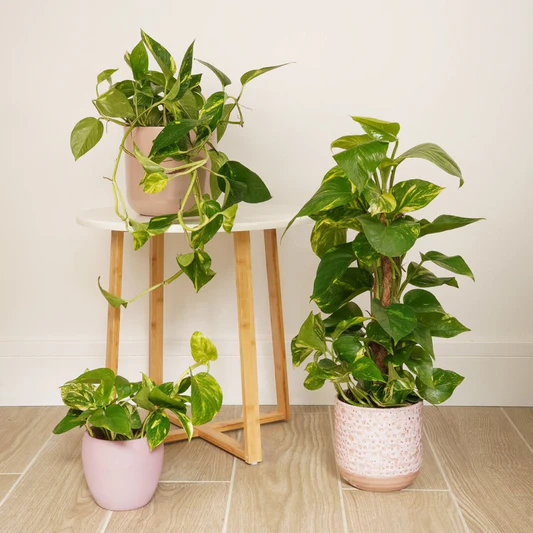
To properly train vining plants, you’ll need the right tools and supports. Here’s what to prepare:
Supports:
- Moss Poles: Great for tropical vines like monstera or philodendron.
- Trellises: Ideal for walls, windows, or large pots.
- Bamboo Sticks or Wooden Stakes: For smaller indoor plants.
- Wire Frames or Arches: To create artistic patterns or living wall designs.
- String or Jute Twine: Gentle and eco-friendly for tying stems.
Tools:
- Pruning shears or scissors (for shaping and removing old growth).
- Plant clips or soft ties.
- Spray bottle (to keep moss poles moist).
- Gloves (especially when handling plants with sap).
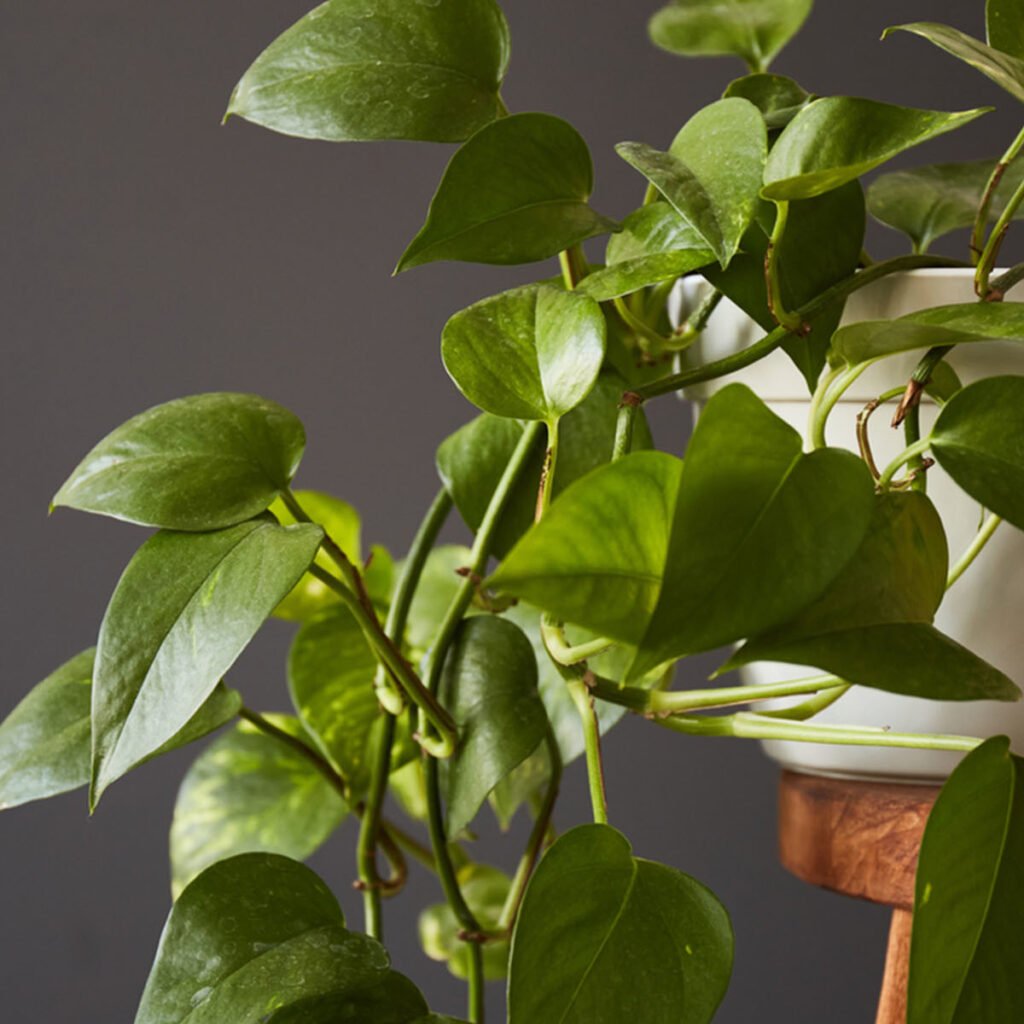
Step-by-Step Guide: How to Train Vining Plants to Climb Indoors
Training vining plants requires patience and a gentle touch. Follow these simple steps to help your plants grow upward beautifully and healthily.
Step 1: Choose the Right Support Structure
Pick a support that complements both your plant’s growth pattern and your interior décor.
- Moss poles mimic tree trunks, helping aerial roots attach naturally.
- Wall trellises or grids let you direct vines in artistic patterns.
- Hanging supports are great for trailing plants that you want to guide upward or sideways.
Make sure your chosen support is sturdy and inserted deeply into the pot so it doesn’t wobble as the plant grows.
Step 2: Guide the Stems Gently
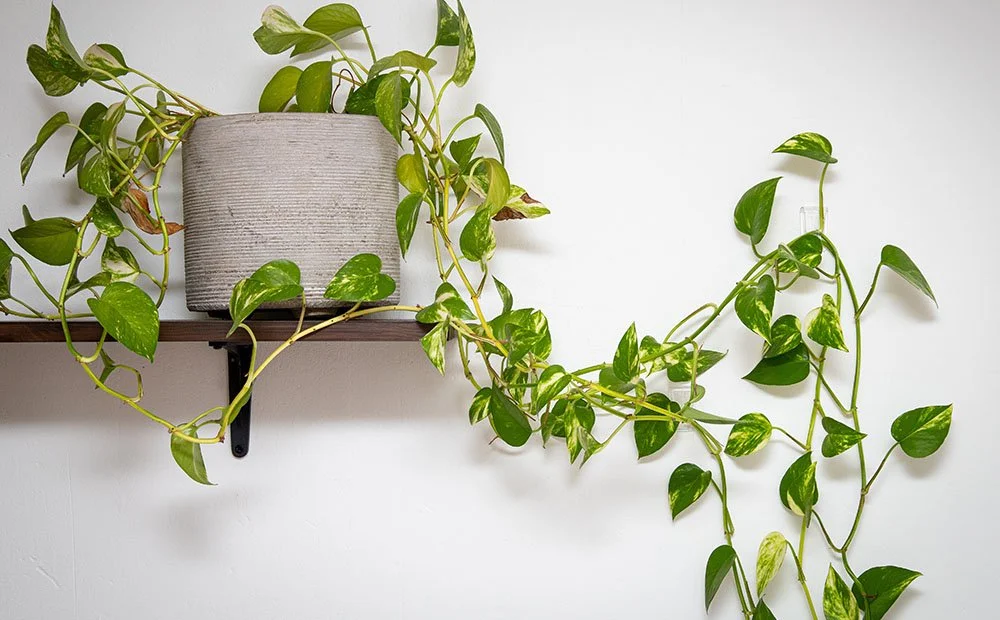
As your vine grows, identify the longest, healthiest stems and start winding or tying them gently to the support.
- Use soft ties or garden clips to secure the stems loosely—never tie tightly, as it can damage the plant.
- Position the stem so that the leaf nodes (where roots and new leaves emerge) are close to the support structure.
- For plants with aerial roots, lightly press them against moss poles or wet surfaces to encourage attachment.
Step 3: Encourage Natural Climbing
Most vining plants naturally produce aerial roots or tendrils that help them cling to surfaces.
- Keep the support slightly moist (especially moss poles) to encourage root attachment.
- Rotate the pot occasionally to ensure even light exposure and balanced growth.
If your plant isn’t attaching on its own, continue to guide it manually until it begins to climb independently.
Step 4: Prune Regularly to Maintain Shape
Regular pruning keeps your vines full and healthy.
- Trim long, leggy stems to encourage bushier side shoots.
- Remove yellow or weak leaves to redirect energy to new growth.
- Use clean scissors to prevent disease spread.
Tip: You can propagate trimmed stems in water or soil to create new plants!
Step 5: Provide Adequate Light and Humidity
Indoor vines need sufficient light to grow strong and maintain their shape.
- Place them near bright, indirect light—like an east- or north-facing window.
- Avoid harsh direct sunlight, which can scorch leaves.
- Maintain 50–60% humidity using a humidifier or a pebble tray, especially for tropical vines.
Low light may cause vines to stretch out and lose density, while dry air can lead to crispy leaf edges.
Step 6: Feed and Water Wisely
Trained vines need consistent nourishment to support vertical growth.
- Water: Keep soil slightly moist but never soggy. Let the top inch dry before watering again.
- Fertilizer: Feed monthly during the growing season (spring and summer) using an organic or balanced liquid fertilizer.
Avoid overfertilizing—it can cause root burn or weak, spindly growth.
Step 7: Adjust and Re-Tie as Needed
As the plant grows, check ties every few weeks. Loosen them if the stem thickens to avoid constriction.
Continue redirecting new stems along the support to maintain a balanced, symmetrical shape.
Creative Ways to Display Climbing Houseplants
Training vines doesn’t just serve a practical purpose—it can also turn your home into a living art gallery. Here are some creative ideas:
1. Wall-Mounted Trellis Designs
Attach a simple grid or wire trellis to your wall and guide the vines to create geometric patterns or heart shapes. This design adds a stunning visual element to bedrooms or living rooms.
2. Window Frame Garden
Train ivy, pothos, or philodendron around a window frame. The sunlight streaming through the leaves creates a peaceful, jungle-like ambiance.
3. Hanging Hoops and Rings
Wrap delicate vines like string of hearts or hoya around circular frames to form elegant hanging orbs.
4. Bookshelf or Ladder Display
Place vining plants on top of shelves and train them to climb upward or weave around books and décor items.
5. Indoor Plant Wall
Use a combination of trellises, hanging pots, and climbing supports to create a lush, vertical “living wall” that acts as a natural centerpiece.
Common Mistakes to Avoid When Training Indoor Vines
Even experienced plant parents make a few mistakes when dealing with climbers. Here’s what to watch out for:
- Tying Too Tightly: This can damage stems or restrict growth.
- Ignoring Light Needs: Without enough light, vines stretch and lose leaves.
- Overwatering: Climbing plants in large pots can suffer root rot if the soil stays wet.
- Neglecting Pruning: Unpruned vines become tangled and lose shape.
- Using Harsh Materials: Avoid metal wires or plastic strings that can cut into stems.
Troubleshooting Growth Problems
If your vining plant seems unhappy, look for these signs and solutions:
| Problem | Likely Cause | Solution |
|---|---|---|
| Long, thin stems | Insufficient light | Move closer to window or add grow light |
| Yellow leaves | Overwatering | Allow soil to dry before watering again |
| Dry, brown edges | Low humidity | Use humidifier or mist regularly |
| Stunted growth | Nutrient deficiency | Apply gentle fertilizer monthly |
| Weak attachment to support | Dry or smooth surface | Keep moss pole damp or use soft ties |
Benefits of Indoor Climbing Plants
Beyond their visual appeal, trained indoor vines offer practical and psychological benefits:
- Air Purification: Vines like pothos and philodendron remove toxins such as formaldehyde and benzene.
- Improved Mood: Greenery reduces stress and enhances mental well-being.
- Better Air Humidity: Plants release moisture, balancing indoor dryness.
- Creative Expression: Shaping vines lets you personalize your living space naturally.
Final Thoughts
Training vining plants to climb indoors is both a creative art and a nurturing science. By providing the right support, guidance, and care, you can transform ordinary vines into stunning vertical gardens that breathe life into your home.
From guiding a pothos along a wall trellis to shaping a philodendron around a moss pole, the process is rewarding and relaxing. With patience and consistency, your climbing plants will reward you with lush growth, beautiful foliage, and a serene, natural atmosphere.
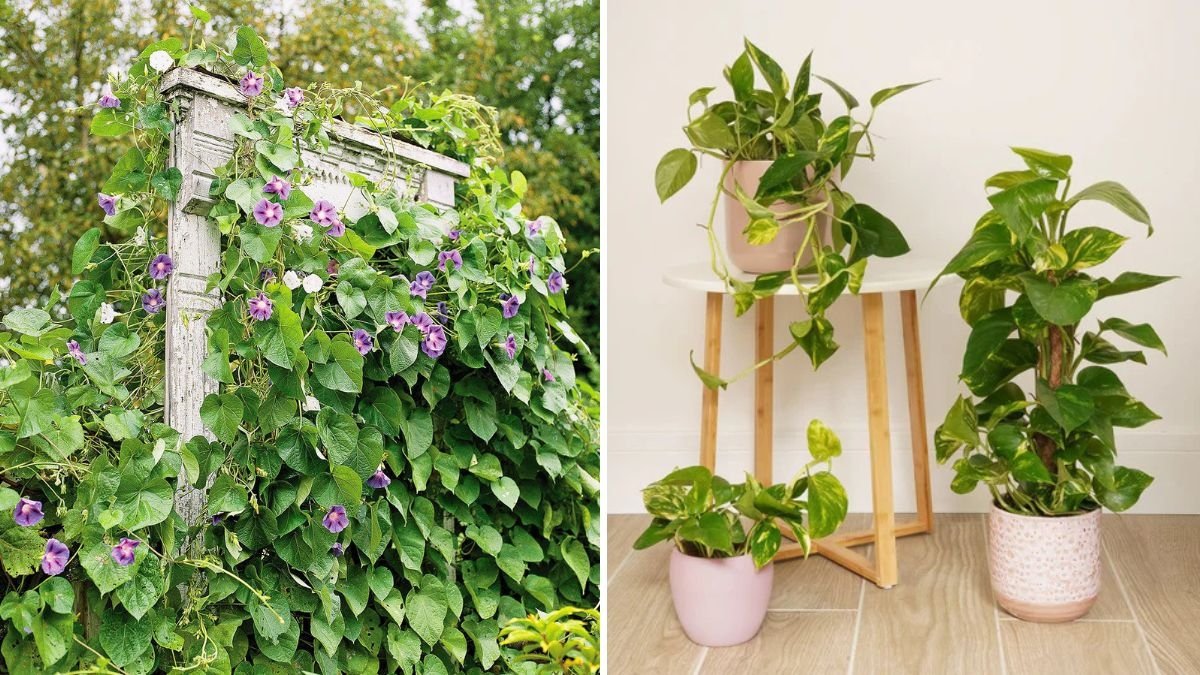




Leave A Comment